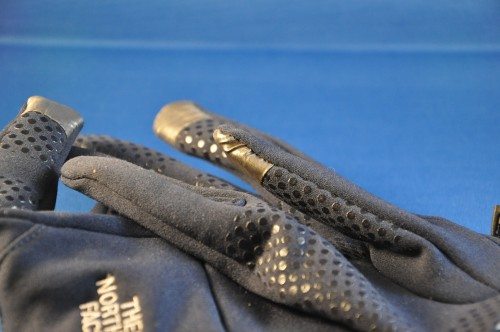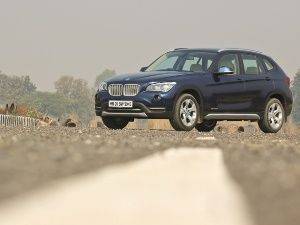
BlackBerry has unveiled its long-awaited
new smartphones to the Indonesian market, one of its most important,
ahead of the devices going on sale here later this month as the company
tries to regain ground lost to rivals Samsung and Apple.
Hastings Singh, BlackBerry’s managing director for South Asia, said at a press conference in Jakarta on Monday that the BlackBerry 10 line of smartphones marked a brand new start for the company. Also symbolic of that change, the company renamed itself BlackBerry from Research In Motion when theoperating system was announced in January.
As for the redesigned operating system, Hastings said it was built from the ground up to offer new ways of multitasking, using apps and supporting connectivity.
BlackBerry 10 devices no longer have a home button. A new feature called BlackBerry Flow allows users to switch apps and receive notifications through a simple swipe. The new, redesigned BlackBerry Messenger, a very popular feature in Indonesia, now allows video calls. The company has also developed a new browser, camera and apps.
Some of the built-in apps in BlackBerry 10 devices include Facebook, Twitter, Foursquare and LinkedIn.
The BlackBerry Z10 is the touchscreen version and will be available at all BlackBerry Lifestyle stores across Indonesia from March 15. It is the first device to use the redesigned operating system. Available in black and white, the smartphone will retail for Rp 6.999 million ($721).
Vivek Bhardwaj, BlackBerry’s head of software portfolio, said they were shaping the new BlackBerry experience by making things simple.
“BlackBerry is stepping away from traditional use of smartphones,” he said.
“BlackBerry Flow is gesture-based, and we believe it’s the future.”
Singh said Indonesia was the key market for BlackBerry. The Jakarta launch is the company’s biggest marketing investment. Singh also added that by brand BlackBerry had 50 percent of the Indonesian smartphone market share.
BlackBerry has also conducted focus group discussions in the country and sought feedback and product insights from Indonesian customers.
“Indonesia has given us inputs for the design of the product,” Singh said.
Research from International Data Corporation, though, showed that the market share of phones that use Android’s operating system rose to 64 percent in the third quarter last year from 52 percent in the second quarter. BlackBerry’s biggest competitor running Android is Samsung, while Apple has its own operating system.
Thorsten Heins, the BlackBerry chief executive, said in Jakarta last October that Indonesia accounted for about 8 percent of BlackBerry’s global business.
The Z10 is being launched ahead of its qwerty version, the Q10, to seize market opportunity. Singh noted that the touchscreen phone had the highest demand in the smartphone market. Even though BlackBerry is confident that it has the best physical qwerty keyboard, the earlier launch for the Z10 is its latest strategy.
BlackBerry has plans to launch six devices running BlackBerry 10 progressively throughout the year, Singh said.
Teemu Sorvisto, director of alliance and development at BlackBerry, said the company had worked with key partners, such as Walt Disney, Skype and Rovio, the creator of the Angry Birds game. He also said that Indonesian developers had submitted more than 4,000 applications. BlackBerry has also worked with more than 50 local partners in Indonesia, such as Cinema 21, Bluebird Taxi, Garuda Indonesia, Bank Central Asia, Bank Mandiri and several news outlets.
BlackBerry has been focusing on developer communities in the past two years. One of the local-made app for BlackBerry 10 is Soccer Ticker, made by Indonesian developer Vincent Putra — the winner of the BlackBerry Jam 2012 for Asia Pacific.
“BlackBerry is still very relevant for developers in Indonesia because the market is still huge,” he said.
His Soccer Ticker app allows users to keep track of soccer updates, schedules, and real time statistics.
Unique to BlackBerry 10 for Soccer Ticker is its connectivity to the popular BlackBerry Messenger feature.
“I think it’s beautifully connected, and users can simply chat using BBM while also using my app,” Vincent said.
Hastings Singh, BlackBerry’s managing director for South Asia, said at a press conference in Jakarta on Monday that the BlackBerry 10 line of smartphones marked a brand new start for the company. Also symbolic of that change, the company renamed itself BlackBerry from Research In Motion when theoperating system was announced in January.
As for the redesigned operating system, Hastings said it was built from the ground up to offer new ways of multitasking, using apps and supporting connectivity.
BlackBerry 10 devices no longer have a home button. A new feature called BlackBerry Flow allows users to switch apps and receive notifications through a simple swipe. The new, redesigned BlackBerry Messenger, a very popular feature in Indonesia, now allows video calls. The company has also developed a new browser, camera and apps.
Some of the built-in apps in BlackBerry 10 devices include Facebook, Twitter, Foursquare and LinkedIn.
The BlackBerry Z10 is the touchscreen version and will be available at all BlackBerry Lifestyle stores across Indonesia from March 15. It is the first device to use the redesigned operating system. Available in black and white, the smartphone will retail for Rp 6.999 million ($721).
Vivek Bhardwaj, BlackBerry’s head of software portfolio, said they were shaping the new BlackBerry experience by making things simple.
“BlackBerry is stepping away from traditional use of smartphones,” he said.
“BlackBerry Flow is gesture-based, and we believe it’s the future.”
Singh said Indonesia was the key market for BlackBerry. The Jakarta launch is the company’s biggest marketing investment. Singh also added that by brand BlackBerry had 50 percent of the Indonesian smartphone market share.
BlackBerry has also conducted focus group discussions in the country and sought feedback and product insights from Indonesian customers.
“Indonesia has given us inputs for the design of the product,” Singh said.
Research from International Data Corporation, though, showed that the market share of phones that use Android’s operating system rose to 64 percent in the third quarter last year from 52 percent in the second quarter. BlackBerry’s biggest competitor running Android is Samsung, while Apple has its own operating system.
Thorsten Heins, the BlackBerry chief executive, said in Jakarta last October that Indonesia accounted for about 8 percent of BlackBerry’s global business.
The Z10 is being launched ahead of its qwerty version, the Q10, to seize market opportunity. Singh noted that the touchscreen phone had the highest demand in the smartphone market. Even though BlackBerry is confident that it has the best physical qwerty keyboard, the earlier launch for the Z10 is its latest strategy.
BlackBerry has plans to launch six devices running BlackBerry 10 progressively throughout the year, Singh said.
Teemu Sorvisto, director of alliance and development at BlackBerry, said the company had worked with key partners, such as Walt Disney, Skype and Rovio, the creator of the Angry Birds game. He also said that Indonesian developers had submitted more than 4,000 applications. BlackBerry has also worked with more than 50 local partners in Indonesia, such as Cinema 21, Bluebird Taxi, Garuda Indonesia, Bank Central Asia, Bank Mandiri and several news outlets.
BlackBerry has been focusing on developer communities in the past two years. One of the local-made app for BlackBerry 10 is Soccer Ticker, made by Indonesian developer Vincent Putra — the winner of the BlackBerry Jam 2012 for Asia Pacific.
“BlackBerry is still very relevant for developers in Indonesia because the market is still huge,” he said.
His Soccer Ticker app allows users to keep track of soccer updates, schedules, and real time statistics.
Unique to BlackBerry 10 for Soccer Ticker is its connectivity to the popular BlackBerry Messenger feature.
“I think it’s beautifully connected, and users can simply chat using BBM while also using my app,” Vincent said.


















